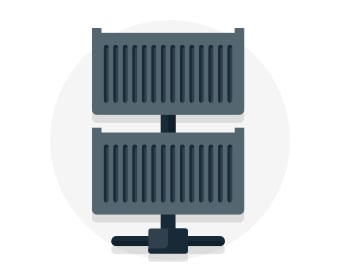A container is a modified runtime environment built on top of a host OS that executes your application.
Azure supports Docker containers (a standardized container model), and there are several ways to manage containers in Azure.
- Azure Container Instances (ACI)
- Azure Kubernetes Service (AKS)
Azure Container Instances
- offers the fastest and simplest way to run a container in Azure
- It is a PaaS offering that allows you to upload your containers and execute them directly with automatic elastic scale.
Azure Kubernetes Service
- The task of automating, managing, and interacting with a large number of containers is known as orchestration.
- AKS is a complete orchestration service for containers with distributed architectures with multiple containers.
Containers are often used to create solutions using a microservice architecture.
This architecture is where you break solutions into smaller, independent pieces.
What is Microservice?
Imagine you may split a website into
a container hosting your front end,
another hosting your back end,
and a third for storage.
This split allows you to separate portions of your app into logical sections that can be maintained, scaled, or updated independently.
Migrating apps to containers
You can move existing applications to containers and run them within AKS. You can control access via integration with Azure Active Directory (Azure AD) and access Service Level Agreement (SLA)–backed Azure services, such as Azure Database for MySQL for any data needs, via Open Service Broker for Azure (OSBA).








Top comments (0)